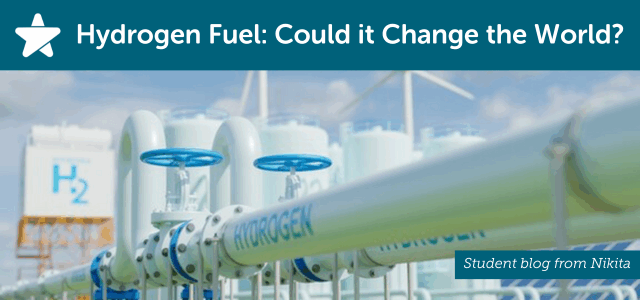Most people today are aware of global warming, particularly the issue of greenhouse gases in the atmosphere, which result from the combustion of fossil fuels. However, there exists a fuel that produces no carbon emissions when burned and could serve as an ideal replacement for combustion engines: hydrogen.
Why Hydrogen?
The core issue with conventional fuels lies in their combustion. These organic compounds release carbon dioxide into the atmosphere, contributing to a wide range of negative environmental effects. In contrast, hydrogen reacts with oxygen to produce only water and heat that can be used to propel a vehicle:
2H₂ + O₂ → 2H₂O + heat
This reaction generates no carbon waste and can be reversed through electrolysis to produce hydrogen and oxygen:
2H₂O(l) → 2H2(g) + O2(g)
Attempts to Develop Hydrogen Combustion Engines
The concept is straightforward. Initial efforts to construct such engines date back to 1820, when Reverend W. Cecil presented his work to the Cambridge Philosophical Society in a paper titled On the Application of Hydrogen Gas to Produce Moving Power in Machinery. Although the engine operated satisfactorily, it never achieved practical application. Subsequent work by N. A. Otto involved using a 50% gasoline mixture to enhance fuel efficiency. He found that hydrogen, being gaseous, was challenging and hazardous to handle. Since then, hydrogen has been used primarily in the space industry, while its use as a combustion fuel has been deemed inefficient.
Challenges with Hydrogen
The properties that make hydrogen an excellent combustion fuel also make its practical application more complicated. The most significant challenges include:
- Premature Combustion
Hydrogen has an exceptionally wide flammability range, often causing it to ignite spontaneously in an engine before the spark is delivered. Studies suggest this is primarily due to hot spots within the exhaust valve or spark plug. Additional research indicates that backfiring can occur when there is overlap between the intake and exhaust valve openings. - Low Density
Hydrogen is an extremely light gas, requiring approximately 11,000 cubic metres to store just 1 kilogram under atmospheric pressure. To achieve practical storage, the gas must be cooled and compressed, which is often impractical for most vehicles due to energy requirements, safety concerns, and cost.
These factors make hydrogen a complex fuel to manage, rendering pure hydrogen-powered internal combustion engines largely impractical.
Current Applications of Hydrogen as Fuel
The primary use of hydrogen in the transportation sector involves hydrogen fuel cells, which generate electricity through an electrochemical reaction between hydrogen and oxygen. Fuel cells are used in vehicles, portable power systems, and stationary energy generation, offering a clean and sustainable alternative to traditional combustion-based energy sources. Additionally, hydrogen plays a critical role in the space industry, as its properties align perfectly with the requirements of chemical thrust engines used in rocket propulsion.
Sources:
-
U.S. Department of Energy: Hydrogen Fuel Basics. Retrieved from https://www.energy.gov/eere/fuelcells/hydrogen-fuel-basics
-
College of the Desert (2001). Hydrogen Use in Internal Combustion Engines. Retrieved from https://www1.eere.energy.gov/hydrogenandfuelcells/tech_validation/pdfs/fcm03r0.pdf
-
U.S. Department of Energy: Hydrogen Storage. Retrieved from https://www.energy.gov/eere/fuelcells/hydrogen-storage















































































